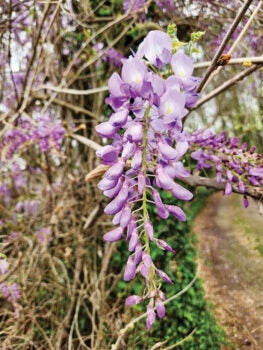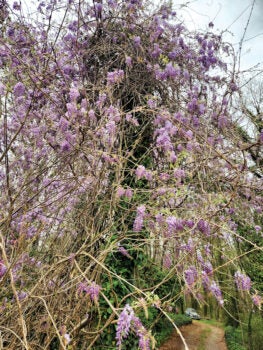Darrell Blackwelder: Wisteria is a colorful spring-blooming vine
Published 12:00 am Saturday, April 6, 2024
Wisteria is a colorful spring blooming vine often used in landscapes and readily found in local garden centers and nurseries. The plant was introduced to the United States from Japan and China in the 1800s as an ornamental vine. The blooms are fragrant in a variety of colors ranging from pink to purple to white. Most gardeners try to keep the vine in check with constant pruning on a well-constructed trellis. However, some creative home gardeners often prune and train the vine into a small tree.
Wisteria is a beautiful spring vine but it has a problem with its out-of-control growth habit. The vine has the ability to climb up almost anything, including trees, plants, buildings, etc. searching for light. The vines are blooming all across Rowan County in vacant fields and trees. The vine’s excessive growth produces dense shade limiting plant growth and development. The vine’s growth is only limited by growth of plant or structure, often reaching lengths in excess of 50 feet with a diameter that has been measured at 15 inches.
Many homeowners with wisteria permeating trees and open areas should consider controlling or eliminating these vines. Large wisteria vines should be cut leaving a stump as close to the ground as possible. Apply a herbicide solution to the stump immediately after cutting the vine. Brush killers with active ingredient of glyphosate (Roundup) and/or triclopyr applied to the fresh stump translocates to the roots. Foliar applications may also be necessary for smaller foliage plants. The best time to apply an herbicide is in the spring and summer when wisteria is actively growing. Go to https://plants.ces.ncsu.edu/plants/wisteria/ for more detailed information about wisteria vines.
Darrell Blackwelder is the retired horticulture agent and director with the North Carolina Cooperative Extension Service in Rowan County. Contact him at deblackw@ncsu.edu.





